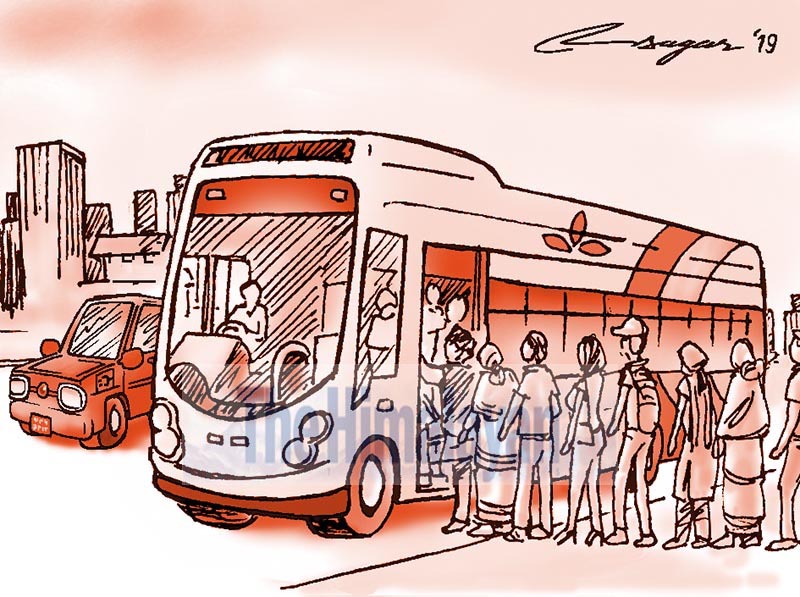EVs are the future: Give them a boost
EVs are now becoming a necessary reality rather than an experiment. Now more than ever, it is crucial that consumers and the government focus on effectively supporting the mainstreaming of these environment-friendly vehicles
The future is electric. Most countries have already set their time frames to accomplish distinct goals that will give them the recognition of a digital nation. Here in Nepal, our government has prolonged its consideration of the technology as a factor for the overall economic, environmental and social development of the country.
Electric Vehicles (EVs) started to take their place in the market in 2010, with the introduction of electric motorbikes. While consumers understood the importance of such environmentally-friendly machines and their cost effectiveness, insufficient promotion led to a loss of the hype. Today, some reputed car manufacturing companies have commenced projects to reintroduce secure, environmentally expedient, reasonably priced and effectively performing electric cars.
Electric cars are often seen as mediocre, a perception that is being increasingly challenged today with the rapid mainstreaming of electric vehicles. These silent automobiles have consistently proven themselves less problematic and more reliable than their gasoline-powered counterparts, which might partly explain their recent upsurge in popularity, as high-profile officials and government authorities have been seen using them.
This increase in popularity may factor into reduction in imports of non-renewable fossil fuels, which, according to experts, will help the economy. The replacement of petroleum and diesel engine vehicles by electric vehicles will allow for the retention of more than $2.5 billion in imports, significantly reducing the trade deficit.
Consumers will receive a variety of benefits by using electric vehicles. In addition to the obvious benefits of not needing to spend on fuel or worry about shortages, they also will not need to change the lubricants or conduct periodic maintenance. It’s a one-time investment, equipped with all the features that one may find in a luxury car. Cruise control system, electronic parking and an abundance of airbags are just some of the features available in electric vehicles for one-third the price of a petroleum-powered equivalent, which is about Rs 10 million.
Manufacturer claims put the range of electric cars at around 400 km for a fully charged battery, which supposedly takes two hours to charge using a 3-phase fast charger. It can also be charged using a 2-phase home charger, which usually takes eight hours. This would mean that for each kilometre driven, only one Nepali rupee is consumed. A lump sum of Rs 400 would allow an electric car to go 400 km, while the average petrol engine car would supposedly only manage 40 km.
Electric car owners assert that they are paying the financial installments for a vehicle with the money that they would have used to fill up the car with fuel.
However, the claims made above for the range of EVs are not representative of the measured worldwide average for electric cars, which still stands at anywhere from 200 to 280 km, so take them with a grain of salt.
Some general concerns for most customers when it comes to electric cars are whether they are suitable for long routes and off road situations. When it comes to the length of the route, Nepal Electricity Authority has helped set up charging stations, which can be booked in advance, along many frequented routes, where recharging may become necessary. As for the concern regarding electric cars’ off road capability, it depends on the ground clearance of the car model being driven.
The performance is claimed, by the manufacturers, to be optimised for all types of journeys and adventures. The lack of an engine and all the noises that go along with it is
another merit that owners reinforce.
Nowadays, the government is playing its bit in the import of electric vehicles by imposing only 10 per cent customs duty and 13 per cent Value Added Tax on the said vehicles, while combustion engine cars still retain their 240 per cent import duty.
Road tax, which varies according to the cc of an engine, is also not applicable to electric vehicles, saving a flat Rs 23,500 per annum. With the motive to save non-renewable fuel and the optimum generation and utilisation of clean energy, the government has also introduced electric buses, and is in the process of inaugurating more environment-friendly vehicles.
Electric vehicles are now becoming a necessary reality rather than an experiment that every manufacturer consigns in order to draw media attention. Now more than ever, it is crucial that consumers and the government focus on effectively supporting the mainstreaming of these environment-friendly vehicles.
The Kathmandu Valley now has more than 800,000 motorbikes and four times more private cars than it did in the last decade. The subsequent increases in toxic gases like carbon monoxide, sulfur dioxide and ozone are a matter for serious consideration.
Consequently, government and vehicle management authorities should leave no stone unturned to formulate new regulations that expedite a favourable ground for electric vehicles in the current market.
By considering the customs, duties, replacing the traditional sources of energy with clean energy, promoting the pros of using an EV and creating more space for them to propagate, we may see a new wave of electric vehicles across the nation.






